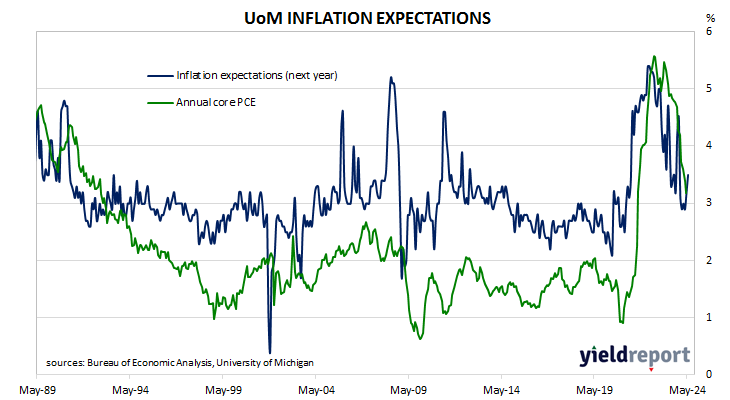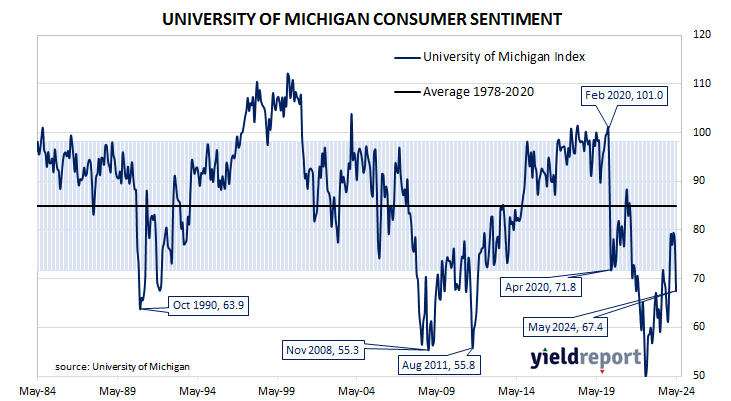Summary: University of Michigan consumer confidence index falls in May, reading less than expected; views of present conditions, future conditions both deteriorate; decreases across age, income, education groups; Treasury yields rise; fed funds rate-cut expectations soften; Westpac: US economy losing momentum, uptick in inflation expectations prompts suggestions of stagflation.
US consumer confidence started 2020 at an elevated level but, after a few months, surveys began to reflect a growing unease with the global spread of COVID-19 and its reach into the US. Household confidence plunged in April 2020 and then recovered in a haphazard fashion, generally fluctuating at below-average levels according to the University of Michigan. The University’s measure of confidence had recovered back to the long-term average by April 2021 but then it plunged again in the September quarter and remained at historically low levels through 2022 and 2023.
The latest survey conducted by the University indicates confidence among US households has deteriorated significantly in May. The preliminary reading of the Index of Consumer Sentiment registered 67.4, considerably less than the 77.0 which had been generally expected and April’s final figure of 77.2.
Consumers’ views of current conditions and their views of future conditions both deteriorated relative to those held at the time of the April survey.
“This 10 index-point decline is statistically significant and brings sentiment to its lowest reading in about six months,” said the University’s Surveys of Consumers Director Joanne Hsu. “This month’s trend in sentiment is characterized by a broad consensus across consumers, with decreases across age, income, and education groups.”
US Treasury bond yields increased moderately across the curve on the day. By the close of business, the 2-year yield had gained 5bps to 4.86%, the 10-year yield had added 4bps to 4.50% while the 30-year yield finished 3bps higher at 4.64%.
In terms of US Fed policy, expectations of a lower federal funds rate in the next 12 months softened, although nearly three 25bps cuts are currently factored in. At the close of business, contracts implied the effective federal funds rate would average 5.315% in June, a touch less than the current spot rate, 5.31% in July and 5.305% in September. However, May 2025 contracts implied 4.60%, 73bps less than the current rate.
“A sharp fall US consumer confidence added to evidence that the US economy is losing some momentum,” said Westpac economist Jameson Coombs. “However, an uptick in consumer inflation expectations complicated the picture, prompting suggestions of the risk of stagflation.”

It was once thought less-confident households are generally inclined to spend less and save more; some decline in household spending could be expected to follow. However, recent research suggests the correlation between household confidence and retail spending is quite weak.


